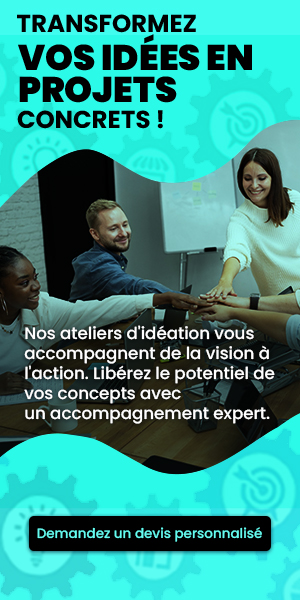The ability to transform abstract ideas into concrete projects is a delicate art. Each concept emerges from a spark of inspiration, but for it to take shape, a structured process is necessary. By dividing the year into targeted projects and establishing success criteria, the path becomes clearer. Enriching exchanges with inspiring people, combined with rigorous planning and a motivated team, are key ingredients for bringing these visions to life. Project management then becomes the catalyst for moving from idea to tangible action.
🔥 Nous recommandons Ideamap
Ideamap est l’outil idéal pour un brainstorming ou un projet collaboratif. Grâce son interface facile et à ses fonctions IA, Ideamap booste votre créativité tout en favorisant une meilleure organisation de vos idées pour atteindre vos objectifs.

Transforming an idea into a concrete project is a key process in any innovation effort. This transition requires a structured and methodical approach. The first step in this journey is identifying the idea. During this phase, it is essential to detail the initial idea, articulate it clearly, and assess its potential. This involves understanding market needs and the benefits your project could provide.
Once the idea is identified, it becomes crucial to define a framework for its development. Dividing the year or a given period into several targeted projects allows you to stay focused on one specific idea at a time. This also facilitates the analysis of the success criteria, which must be established in advance to measure the project’s effectiveness and impact. By asking questions such as: “What results are we aiming for? Who is our target audience?” you can guide your work in the right direction.
Building a dedicated team is another essential component. Introducing different perspectives and expertise within your group fosters creativity and innovation. Surrounding yourself with inspiring and passionate people about the subject enhances collaboration and stimulates the development of the idea. Effective teamwork also facilitates the implementation of ideas and ensures a positive dynamic throughout the transformation process.
The planning of the project is one of the most delicate stages, yet it is equally crucial. It requires charting a regulatory roadmap that incorporates specific objectives, clear deadlines, and intermediate steps. It is vital to guard against unforeseen events by integrating leeway and defining the necessary resources for each phase of the project. Creating a Gantt chart, for example, can be a useful tool for visualizing the schedule and tasks to be completed.
Next comes the issue of budgeting. Establishing a realistic budget is fundamental for the success of a project. This involves evaluating the costs associated with developing and implementing the idea, which includes human, material, and technical resources. Once the budget is established, it will be necessary to ensure its rigorous management throughout the process to avoid deviations.
To conclude this process, a phase of monitoring and evaluation is equally important. It is necessary to measure the results obtained against the criteria defined initially. This can be achieved through performance indicators, allowing you to quantify the project’s success and adjust the course if necessary for future projects. With this structure and a well-developed ideation method, ideas can become tangible and give birth to sustainable and innovative projects.
To deepen your knowledge and skills in transforming ideas into projects, you can consult resources and templates online, such as the one offered on la mallette or this recommended practice on design thinking.















